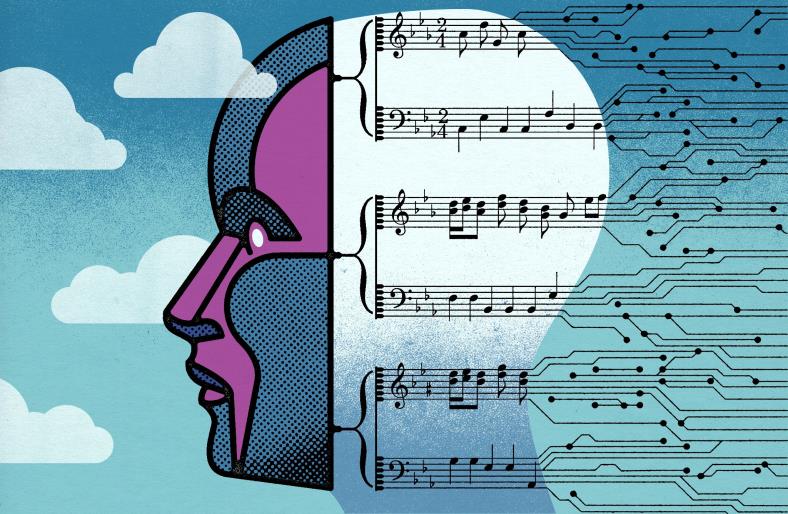Vaporwave is a genre of music that grew out of an online aesthetic. A community that shared an interest in early graphic design, pixels, Roman busts, and Japanese culture developed on internet forums.
These visual references are a part of Vaporwave’s identity.
The Millennials
Since its initial rise, vaporwave has garnered the attention of various music websites and blogs. Vaporwave has become a niche movement with a particular audience. Originally a genre of music created by teens slowing, chopping, and remixing ’80s elevator music, it has now grown into a fully-fledged art culture replete with subgenres that emphasize different sounds or ideas.
As a result, it has become increasingly crucial for vaporwave artists to have a robust online presence and a solid social media following. It has been facilitated by the fact that the internet is an ideal platform for disseminating this type of art.
In terms of the art itself, vaporwave often takes inspiration from nostalgic images and videos from decades past. These are often mixed with distorted elements or surreal imagery to create a sense of melancholy and nostalgia. Using visual tropes such as palm trees, ancient Roman sculptures, and VHS artifacts is a popular way for vaporwave artists to express their feelings and create an aesthetic that evokes a specific time and place.
However, despite its apparent counter-culture roots, the vaporwave genre has also developed a particular and sometimes toxic ideology. In the early days of vaporwave, many artists used their music to mock consumer culture and critique capitalism. However, the genre’s popularity led to a burgeoning meme culture that has twisted and warped the original intentions of the genre.
The Dystopia
When Vaporwave exploded on the internet, its fervent fans formed small groups and created communities where they could control the narrative of their favorite genre. It was a deliberate strategy to keep the genre’s message from becoming too diluted or overtaken by outside influences, such as the conservative alt-right movement.
The community of vaporwave producers has adapted and shaped the genre over time. Still, its core message remains cynicism and satire of capitalism, escapism from the harsh realities of life, and the desire to stay hip to the latest trends. This vision hasn’t been exhausted yet, which keeps the genre alive and growing in subgenres like “Mall Soft” and “Future Funk.”
Its visual aesthetic reflects these themes as well. Its cover art often features retro computer graphics, stylized Roman or Greek busts, a pixilated city skyline, and lyrics written in Japanese. In addition, the music evokes an alternate reality that is a dystopia, complete with elevator music, VHS tapes, and jingles for corporate offices or shopping malls.
While this vision may be dystopian, it also feels like a dream come true for many millennials. It gives them a way to express their frustration with the current state of the world in an online environment that is safe and private. Vaporwave has given them a creative space to be themselves and not feel judged by others.
The Future
Vaporwave appealed to a diverse group of listeners. It was created by people who were part of a generation raised on social media and marketing, but it is a style that transcends age, gender, race, and politics. It’s about nostalgia and a desire to find connections between past and present. Vaporwave inspired new genres like lo-fi hip-hop and future funk, but it also made people look back to the ’90s again, an era that seems very far away now.
The vaporwave aesthetic has also impacted art, with artists using it to create their work. It has allowed them to express themselves without worrying about an audience’s approval. It has allowed them to be more experimental and innovative, leading to some fantastic works of art.
Vaporwave has even spawned its subcultures, with each one focusing on different sounds or ideas. Mallsoft is a subgenre that utilizes the consumeristic detachment of classic vaporwave as the thematic basis for ambient music in shopping centers. Meanwhile, post-internet is a dystopian genre focusing on computerized abstraction and futuristic soundscapes. It is a style that appeals to the cynical impulses of the Millenial generation while also connecting with punk, which is typically aligned with anarchy and anti-capitalism.
The Visuals
Vaporwave’s visual aesthetic is as evocative as the music it spawned. It draws from various art movements like Surrealism, the interwar movement that used symbols and images of everyday life to create feelings of unease and suspension of reality. For example, Yves Tanguy’s organic shapes are signs that became significant only by being themselves and not by representing something else. The same can be said for the tropical plants, ancient Roman sculptures, and 3-D rendered objects that populate vaporwave imagery.
This visual element is also reminiscent of the internet era in which the genre was born. Vaporwave art often uses retro elements such as VHS tapes, 16-bit gaming graphics, pixellated text,, and the iconic logos of vintage clothing brands. It also combines these elements with images of the internet, real and fictional virtual spaces, trendy advertisements, and modern Stage Capitalist consumer culture.
Another defining aspect of this trend is computerized abstractions and futuristic soundscapes. Unlike Mallsoft, which is more ambient to the point of being subliminal, vaporwave’s electronica is cold and often feels disorienting. Unsurprisingly, it evokes thoughts of being adrift in an impersonal and largely empty digital world.

